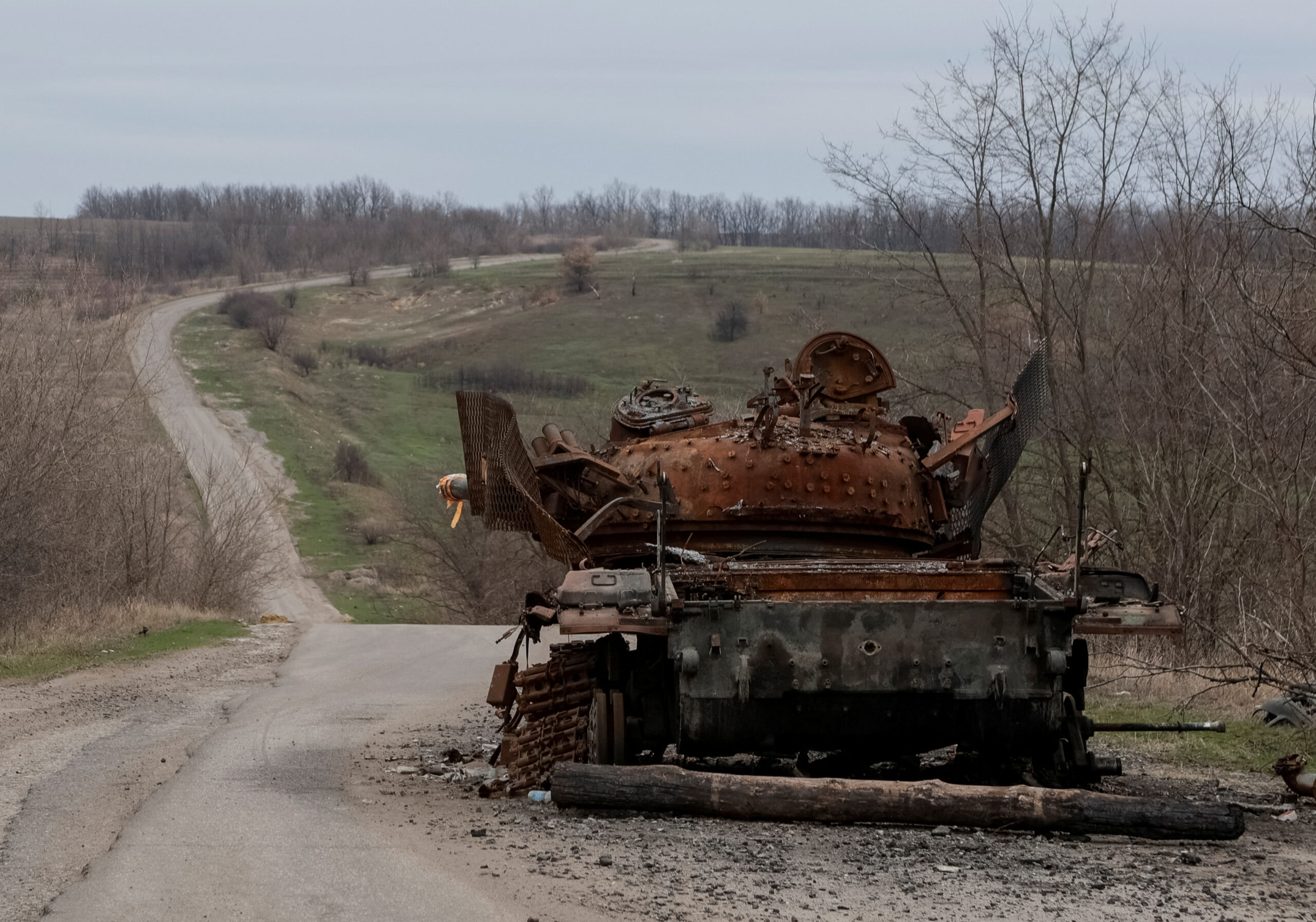Russia’s Ukraine invasion continued to lose momentum in March 2025, with the Kremlin’s territorial gains reportedly falling for a fourth consecutive month. According to new data from the Institute for the Study of War, Russian forces captured 240 square kilometers of Ukrainian land throughout March, representing the smallest monthly total since the current wave of offensive operations began in summer 2024.
News of Russia’s slowing advance comes as Russian President Vladimir Putin claims that his invading army currently holds the “strategic initiative” along the entire front line of the war in Ukraine. “There are now reasons to believe we can finish off” the Ukrainian military, he told submarine crews last week during a visit to the north Russian port city of Murmansk.
While Putin predicts impending Russian victory, the evidence on the ground in Ukraine would seem to suggest otherwise. Far from being on the verge of crumbling, Ukraine’s defensive lines have strengthened significantly in recent months. As a result, advancing Russian forces continue to suffer heavy losses without achieving any meaningful breakthroughs.
Ukrainian commanders are well aware that the recent lull in Russian battlefield gains may only be a temporary phenomenon as Putin’s army regroups following months of intense fighting. Officials and analysts in Kyiv are now warning that preparations are likely well underway for a major new Russian offensive that is expected to begin in the coming weeks and last until late in 2025.
Putin hopes this new campaign can help strengthen his position as negotiations intensify over a possible compromise settlement to end the war. Speaking last week in Paris, Ukrainian President Volodymyr Zelenskyy accused the Kremlin dictator of “dragging out talks and trying to get the United States stuck in endless and pointless discussions about fake conditions just to buy time and then try to grab more land.”
Eurasia Center events

Russia’s modest battlefield gains since the start of the current year provide important perspective at a time when international media coverage and Western commentaries often create the misleading impression that Ukraine’s position is hopeless. In reality, the Ukrainian army has stood up to the full might of the Russian military for more than three years and represents a formidable obstacle to Putin’s plans for the complete subjugation of the country.
Today’s Ukrainian army is by far the largest and most experienced force in Europe, and is backed by a rapidly expanding domestic defense industry that already accounts for around forty percent of Ukraine’s military needs. Since early 2022, Ukrainian troops have succeeded in liberating around half of all the territory occupied by Russia, and have won a string of famous victories in the Kyiv, Kharkiv, and Kherson regions.
Over the past three years, Ukraine has also emerged as a technologically advanced drone warfare superpower. Ukrainian drone manufacturers now produce millions of drones each year and continue to innovate on a daily basis. This is having a huge impact on the battlefield, where drones now account for well over half of all Russian casualties.
At sea, marine drones have enabled Ukraine to sink or damage around one-third of Russia’s entire Black Sea Fleet. This has transformed the Battle of the Black Sea and forced the remainder of Russia’s warships to retreat from Crimea. Meanwhile, Ukrainian commanders are using the country’s expanding arsenal of long-range drones and domestically produced cruise missiles to bring Putin’s invasion home by striking military and energy industry infrastructure deep inside Russia.
The remarkable evolution of the Ukrainian Armed Forces since February 2022 should give pause to all those who insist that Ukraine “has no cards” to play in future negotiations. While Kyiv cannot realistically hope to match Russia’s overwhelming advantages in terms of manpower, firepower, funding, and industrial capacity, Ukraine is now a major military power in its own right and will not agree to any peace deal that leaves the continued existence of the country in doubt.
Peter Dickinson is editor of the ’s UkraineAlert service.
The views expressed in UkraineAlert are solely those of the authors and do not necessarily reflect the views of the , its staff, or its supporters.

The Eurasia Center’s mission is to enhance transatlantic cooperation in promoting stability, democratic values and prosperity in Eurasia, from Eastern Europe and Turkey in the West to the Caucasus, Russia and Central Asia in the East.
Image: A destroyed tank is seen on a road, amid Russia’s attack on Ukraine, in the Kharkiv Region, Ukraine. March 25, 2025. (REUTERS/Sofiia Gatilova)











